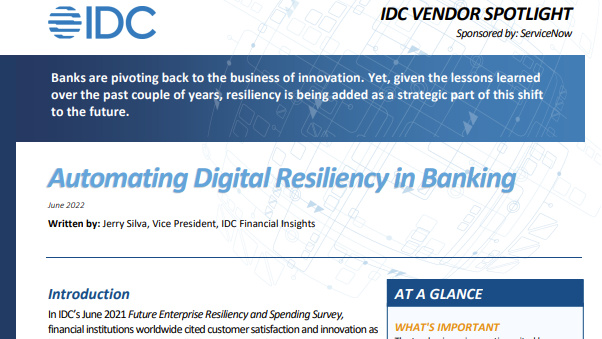2018: The year of data insurance
Damaging data breaches are behind a growing demand for specific data insurance policies


For many companies, data is a critical business asset. But how can the value of that data be measured? And what happens when that data is lost or stolen?
The constant occurrence of high profile data breaches shows how crippling a threat to a company's data can be, and the irreparable damage it causes to organisations' reputations. In addition to this, the Ponemon Institute estimated the average total cost of a data breach in 2017 at $3.62 million.
But are companies doing everything they can to protect and insure their data? One industry rapidly growing in response to data breaches is the cyber security insurance market. This industry has seen 30% year-on-year growth, with the industry set to reach $5.6 billion in annual gross written premium by 2020, according to AON.
Cyber and privacy insurance covers a business's liability for a data breach in which the customer's personal information is exposed or stolen by a hacker.
Insuring the uninsurable
However, even with the market's growth and the continued threat of data breaches, only 19% of UK companies are covered for losses associated with cyber security breaches and data theft. PwC say that the amount of cover insurers offer does not come close to the potential losses seen by companies from a truly damaging cyber attack.
There is also a nervousness among insurers themselves to shoulder the risks: half of insurers in the UK do not actively pursue cyber insurance as an area of growth, believing the risk to be "borderline insurable", and those who do offer it tend to limit the amount of cover offered under each policy, according to PwC.
But with the increase in breaches and companies' subsequent losses, it seems likely that coverage will broaden over the next year or so, as no one is immune to the threat of a data breach.
Get the ITPro daily newsletter
Sign up today and you will receive a free copy of our Future Focus 2025 report - the leading guidance on AI, cybersecurity and other IT challenges as per 700+ senior executives
Valuing data
Doug Laney, an analyst at Gartner, recently wrote a book (titled Infonomics: How to Monetize, Manage, and Measure Information for Competitive Advantage) that provides distinct models on how companies across all industries can review the value of their data, both in non-financial models and financial models.
Non-financial models focus on the intrinsic value, the business value and the performance value of the data. These data values can measure a company's uniqueness, accuracy, relevancy, internal efficiencies and overall impact of its usage.
Financial models focus on the cost value, the economic value and the market value of the data. These data values can measure the cost of acquiring data, administering the data internally and the value of selling or licensing a company's data.
Data as a commodity means its value will only increase, and ultimately drive new questions and conversations about how this raw material can continue to project companies to greater heights and help them gain new advantages. But as its value increases and drives a company's wealth-creation strategies, it becomes a bigger target for cyber criminals too, leading companies to seek to protect it. While insurers haven't stepped in yet, the surge of breaches in 2016 and 2017 arguably makes 2018 the year more will begin to offer insurance policies for this increasingly valuable asset.
Picture: Shutterstock
Esther is a freelance media analyst, podcaster, and one-third of Media Voices. She has previously worked as a content marketing lead for Dennis Publishing and the Media Briefing. She writes frequently on topics such as subscriptions and tech developments for industry sites such as Digital Content Next and What’s New in Publishing. She is co-founder of the Publisher Podcast Awards and Publisher Podcast Summit; the first conference and awards dedicated to celebrating and elevating publisher podcasts.
-
 Should AI PCs be part of your next hardware refresh?
Should AI PCs be part of your next hardware refresh?AI PCs are fast becoming a business staple and a surefire way to future-proof your business
By Bobby Hellard
-
 Westcon-Comstor and Vectra AI launch brace of new channel initiatives
Westcon-Comstor and Vectra AI launch brace of new channel initiativesNews Westcon-Comstor and Vectra AI have announced the launch of two new channel growth initiatives focused on the managed security service provider (MSSP) space and AWS Marketplace.
By Daniel Todd
-
 Conquering technology risk in banking
Conquering technology risk in bankingWhitepaper Five ways leaders can transform technology risk into advantage
By ITPro
-
 Advancing your risk management maturity
Advancing your risk management maturityWhitepaper A roadmap to effective governance and increase resilience
By ITPro
-
 Same cyberthreat, different story
Same cyberthreat, different storyWhitepaper How security, risk, and technology asset management teams collaborate to easily manage vulnerabilities
By ITPro
-
 Beyond VPN replacement
Beyond VPN replacementWebinar Other ZTNA superpowers CISOs should know
By ITPro
-
 APIs: Understanding the business benefits and risks
APIs: Understanding the business benefits and riskswhitepaper What you need to know about potential data exposure from APIs
By ITPro
-
 Unmasking the tricks: How our Brand Protection can stop impersonators in their tracks
Unmasking the tricks: How our Brand Protection can stop impersonators in their trackswhitepaper Protecting your organization from phishing attacks
By ITPro
-
 When banking works, the world works
When banking works, the world worksWhitepaper Five ways automated processes can drive revenue and growth across your bank
By ITPro
-
 Automating digital resiliency in banking
Automating digital resiliency in bankingWhitepaper Prioritize investment in solutions that mitigate a lack of digital resiliency when disruptions strike
By ITPro